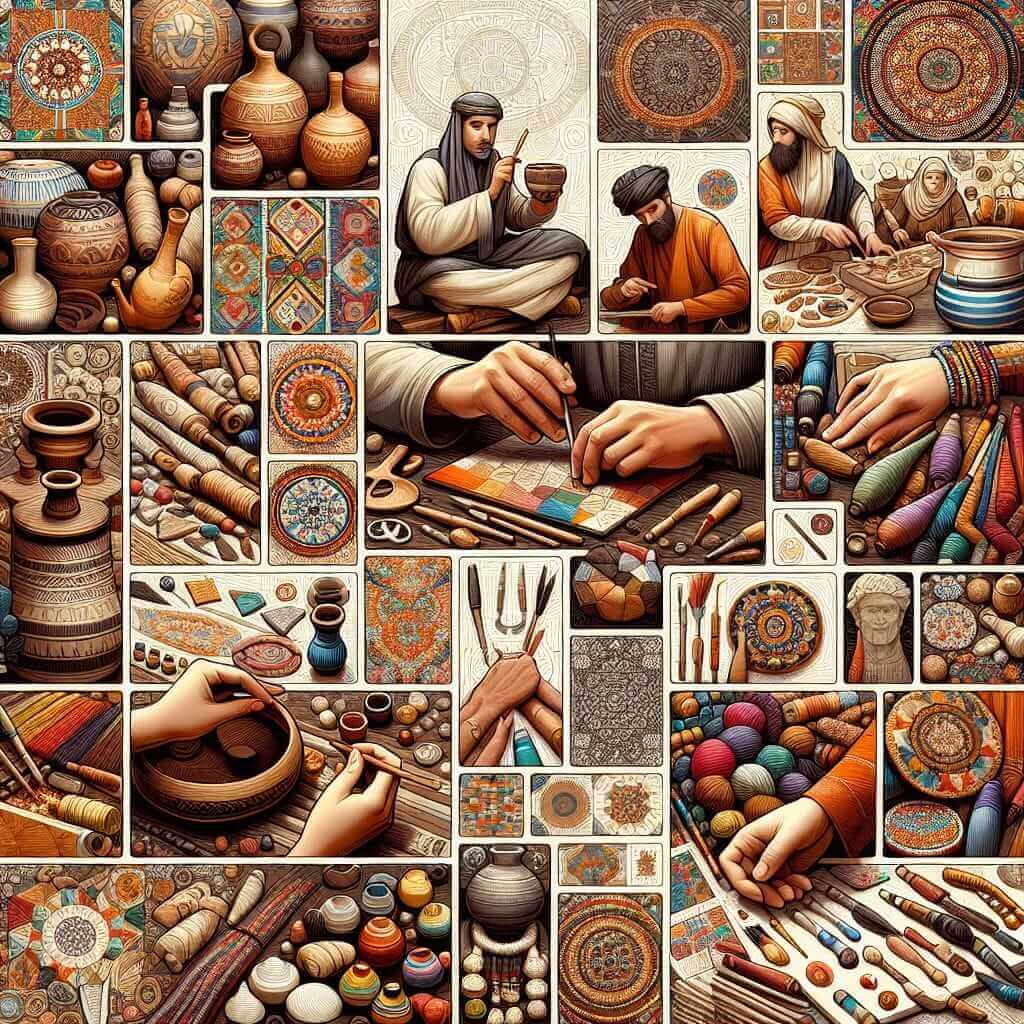The IELTS Reading section is a vital component of the IELTS exam, testing your ability to understand and interpret various texts. This article will focus on the cultural impacts of traditional crafts, a subject that not only is rich in content but also frequently appears in exams. By examining this topic, we will look at how traditional crafts influence and are influenced by culture, providing a detailed reading exercise that mirrors the actual test conditions. Historical data suggests that topics related to cultural impacts have a good chance of appearing in future IELTS exams, making this practice highly relevant.
Main Content
Practice Reading Text: Cultural Impacts of Traditional Crafts
Reading Passage
Easy Text
Traditional crafts play a significant role in maintaining the cultural heritage of many societies around the world. These crafts, often passed down through generations, include weaving, pottery, and wood carving. They are not just means of producing goods but also serve as a medium of expressing cultural values and identities.
In many cultures, traditional crafts are tied to specific ceremonies and rituals. For example, in some African communities, beadwork is an essential part of wedding rituals, symbolizing unity and continuity. Similarly, Japanese tea ceremonies often feature traditional pottery, which carries historical and cultural significance.

However, the influence of globalization has posed challenges to the preservation of traditional crafts. Mass production and modern technology have made it easier to produce crafts quickly and cheaply, often leading to a decline in the quality and authenticity of traditional handiwork. Additionally, younger generations, influenced by modern lifestyles, may show less interest in learning these ancient skills.
Efforts are being made to revitalize traditional crafts through educational programs and tourism. Governments and non-governmental organizations (NGOs) are working to ensure that these crafts remain viable by creating markets for them and encouraging their practice in schools.
Despite these challenges, traditional crafts continue to impact culture profoundly. They provide a tangible connection to the past and help maintain the unique identities of different cultural groups. By preserving these skills, societies can ensure that their cultural heritage remains vibrant and relevant for future generations.
Questions
Multiple Choice
- What is the primary importance of traditional crafts?
- A. Generating income
- B. Expressing cultural values and identities
- C. Providing leisure activities
- D. Enabling modern production techniques
True/False/Not Given
2. Traditional crafts are solely a means of producing goods.
Yes/No/Not Given
3. The younger generations are less interested in traditional crafts due to modern lifestyles.
Matching Information
4. Match the following descriptions with the correct items:
- Beadwork: [ ]
- Japanese pottery: [ ]
Sentence Completion
5. Traditional crafts provide a tangible connection to the _____.
Summary Completion
6. Efforts to preserve traditional crafts include educational programs and _____.
Answer Key
Multiple Choice
- B. Expressing cultural values and identities
True/False/Not Given
2. False – The passage states that traditional crafts serve as a medium of expressing cultural values and identities, not just producing goods.
Yes/No/Not Given
3. Yes – The passage states that younger generations, influenced by modern lifestyles, may show less interest in learning these ancient skills.
Matching Information
4.
- Beadwork: African communities
- Japanese pottery: Japanese tea ceremonies
Sentence Completion
5. Traditional crafts provide a tangible connection to the past.
Summary Completion
6. Efforts to preserve traditional crafts include educational programs and tourism.
Common Mistakes in Answering
- Misinterpreting the purpose of traditional crafts.
- Confusing the significance of modern influences on traditional practices.
- Missing out on nuanced details, like the specific cultural significance of certain crafts.
Vocabulary
- Heritage (noun) /ˈhɛrɪtɪdʒ/: Legacy or tradition handed down by previous generations.
- Ceremony (noun) /ˈsɛrəˌmoʊni/: A formal event performed on a special occasion.
- Ritual (noun) /ˈrɪtʃuəl/: A set of actions performed for their symbolic value.
- Globalization (noun) /ˌɡloʊbəlaɪˈzeɪʃən/: The process by which businesses or other organizations develop international influence or start operating on an international scale.
- Authenticity (noun) /ˌɔːθɛnˈtɪsɪti/: The quality of being genuine or true.
Grammar
- Present Continuous Tense: Used to describe ongoing actions or future arrangements. Example: “Governments are working to ensure that these crafts remain viable.”
- Passive Voice: Often used in formal writing to emphasize the action or result rather than the subject. Example: “Efforts are being made to revitalize traditional crafts.”
Advice for IELTS Reading
- Skim through the passage first to get a general idea of the content.
- Pay attention to keywords and manage your time efficiently.
- Practice different types of questions frequently to familiarize yourself with various formats.
- Focus on improving both your vocabulary and grammar as they are crucial for understanding and correctly interpreting the text.
By following these guidelines and practicing regularly, you can improve your reading skills and increase your chances of achieving a high score on the IELTS exam.